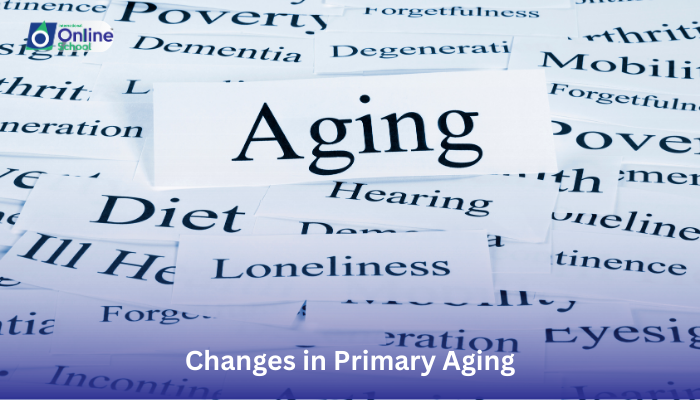
Learning Outcomes:
i. Define primary aging and differentiate it from secondary aging.
ii. Identify key physical and sensory changes associated with primary aging.
iii. Appreciate the normal nature of these changes as part of the human life cycle.
iv. Develop healthy lifestyle habits and coping mechanisms to navigate the challenges of primary aging.
Introduction:
Have you ever observed the majestic redwood, its bark etched with the whispers of centuries? Or the vibrant coral reef, teeming with life even as its builders age gracefully? These natural wonders remind us that aging is an inevitable part of life, a gentle hand that paints our canvas with the colors of time. In this lesson, we'll explore the changes associated with primary aging, not as signs of decline, but as normal chapters in the incredible story of our human journey.
i. Primary Aging: A Symphony of Changes
Unlike secondary aging caused by external factors like disease or neglect, primary aging is a natural, programmed process within our cells. It's like the conductor of a symphony, orchestrating a series of changes within our bodies, including:
Hair: Our hair follicles gradually slow down production, leading to thinning and eventual graying. This change in color is due to the decline in melanin production, the pigment responsible for hair color.
Skin: The sun's ultraviolet rays and the natural passage of time can cause the skin to lose elasticity, leading to wrinkles and the formation of pigmented patches.
Vision: The lens of the eye gradually loses its flexibility, making it harder to focus on close objects, a phenomenon known as presbyopia. Additionally, sensitivity to light and glare may increase.
Hearing: High-frequency sounds become harder to hear as tiny hair cells in the ear wear down with age. This can affect our ability to follow conversations in noisy environments.
Movement: Muscle mass and strength decline with age, making everyday activities like climbing stairs or carrying groceries slightly more challenging. Additionally, reflexes may slow down, affecting balance and coordination.
Stress response: The body's ability to adapt to stress can diminish with age, making individuals more susceptible to its negative effects on health and well-being.
Immune system: The immune system's efficiency can decrease with age, making individuals more prone to infections and taking longer to recover from illnesses.
ii. Embracing the Colors of Time: Normalcy and Acceptance
It's important to remember that these changes are normal and inevitable aspects of primary aging. They don't signify a decline in our worth or potential; they are simply the brushstrokes of time painting our unique portraits. Accepting these changes as natural parts of life can help us avoid unnecessary anxiety and focus on enjoying the present moment.
iii. Navigating the Symphony: Healthy Habits and Coping Mechanisms
While we cannot prevent primary aging, we can certainly influence its course and our response to its changes. Here are some ways we can do that:
Healthy lifestyle: A balanced diet, regular exercise, and adequate sleep are essential for maintaining physical and mental well-being throughout life.
Stress management: Techniques like meditation, yoga, and spending time in nature can help us manage stress effectively, reducing its negative impact on our health.
Sensory aids: Utilizing glasses, hearing aids, and other assistive devices can help us adapt to age-related sensory changes and maintain our independence.
Social support: Staying connected with loved ones, engaging in social activities, and seeking support groups can provide emotional strength and a sense of belonging.
Primary aging is not a melody of decline, but a natural chapter in the beautiful symphony of life. By understanding its changes, embracing its normalcy, and cultivating healthy habits and coping mechanisms, we can navigate this chapter with grace and continue to live life to the fullest, appreciating each note in the grand song of our existence. Remember, time paints its colors on us all, but it's up to us to choose the colors that brighten our canvas and make our aging journey a masterpiece of resilience and joy.